Blind comparison of photography on the iPhone XR versus Google Pixel 3 XL
Comparing the iPhone XS Max's camera to the shooter on Google's Pixel 3 XL is a bit unfair, given the iPhone has a telephoto lens and costs $200 more. The iPhone XR has a single lens camera, just like the Pixel 3 XL, and it's actually $150 cheaper than Google's flagship, but will that work in the Pixel 3 XL's favor?
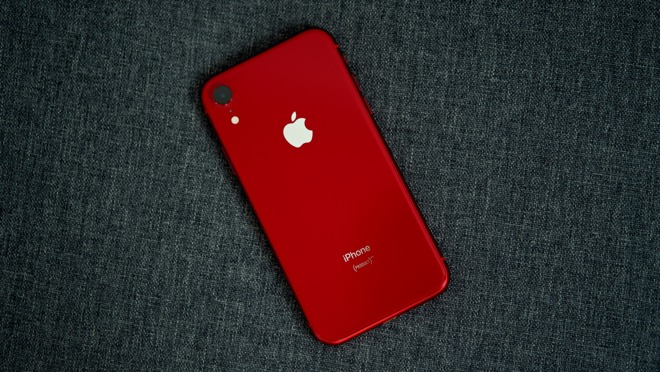
In this blind A-B test, there are 15 images shot with each phone. If you want to play along, make a note of which images you prefer from each pair. The devices are identified below the gallery, so be careful if you don't want to spoil the surprise.
For all of the photographs in the blind test, image A was from the iPhone XR, while image B was taken on the Pixel 3 XL.
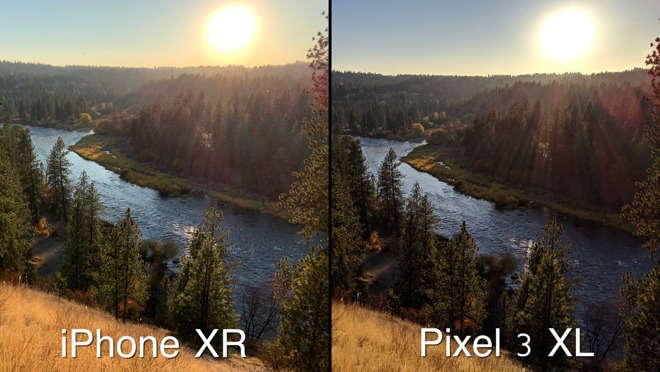
In this first photo, the iPhone just lacks contrast and looks a little bit too warm. The story's exactly the same in this photo. As for this one, the Pixel completely bombed the white balance, making it unrealistically blue.
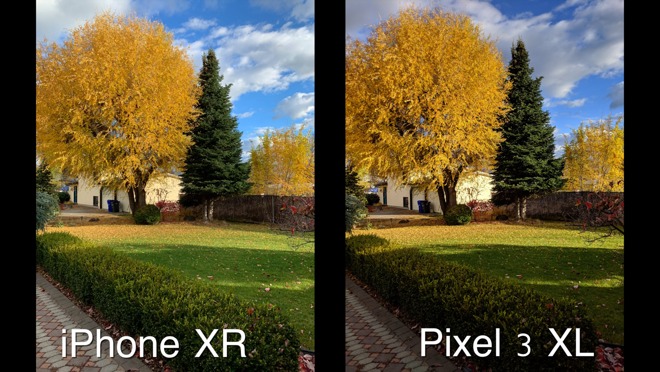
One interesting thing is that the Pixel automatically crops in 2x while taking portrait photos, which also adds more blur and makes the background look more compressed.
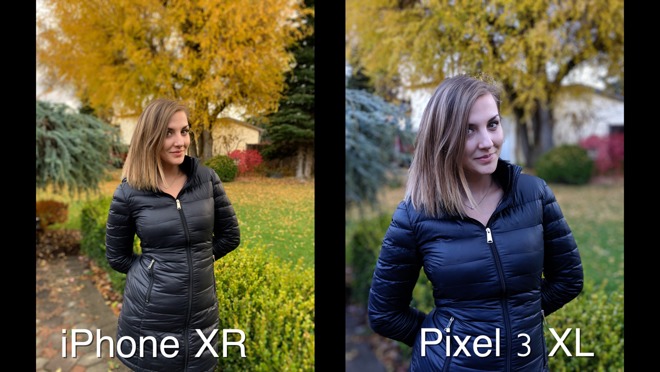
Here, the Pixel is still too blue, and prefer the blur edging more on the iPhone.
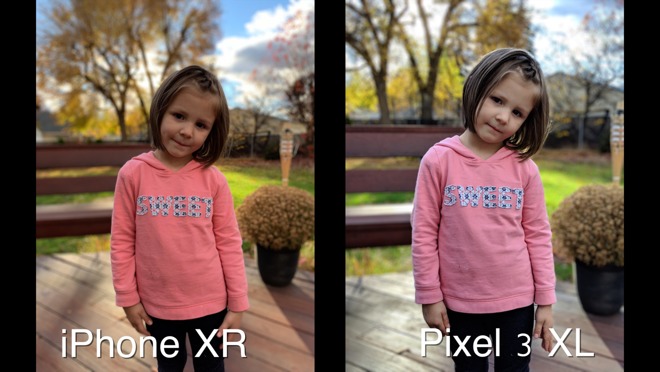
In this one, the iPhone looks a lot more natural, but the Pixel did better job at bringing the shadows up.
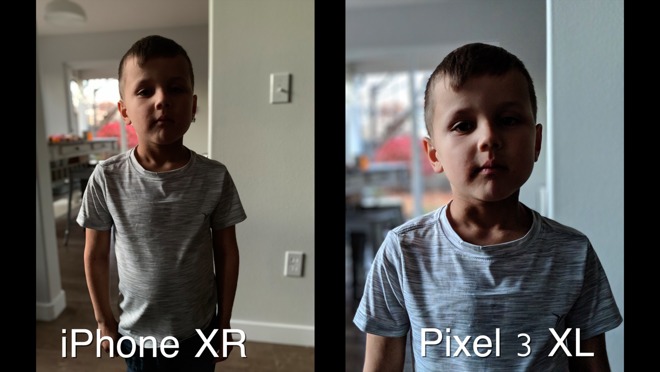
In this coffee shop, the white balance is better on the iPhone, but the Pixel 3 XL produced sharper detail.
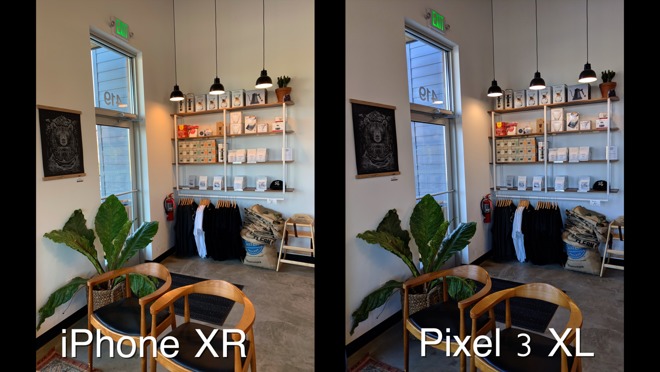
Here, the Pixel 3 messed up the white balance, but in the opposite direction. It's now way too orange.
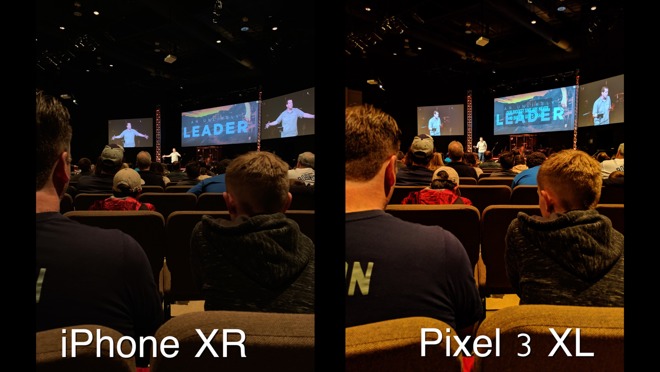
In this shot where we zoomed in as close as we could, the Pixel got closer and looked more detailed, despite the aggressive noise reduction.
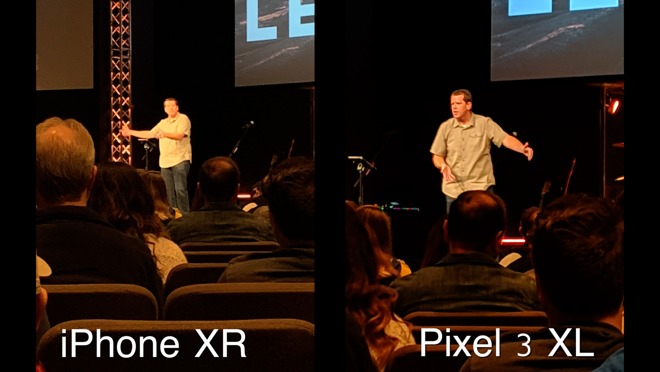
In this one, we actually framed the shot the same by getting closer on the iPhone XR, since you can't zoom in with a portrait photo, and it really showed the difference in compression. Because of this, the Pixel looks better.
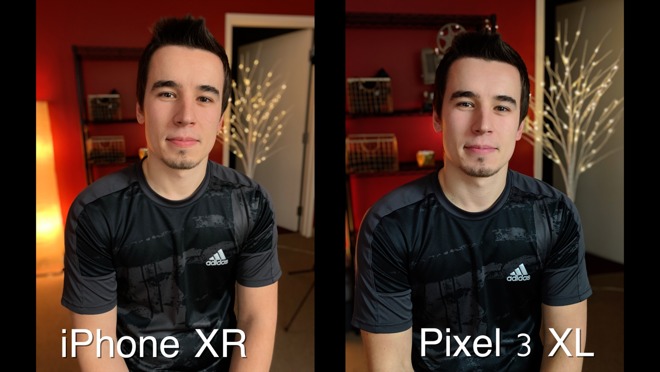
In this selfie photo, the iPhone XR looks better because the face and background are brighter and the colors really pop.
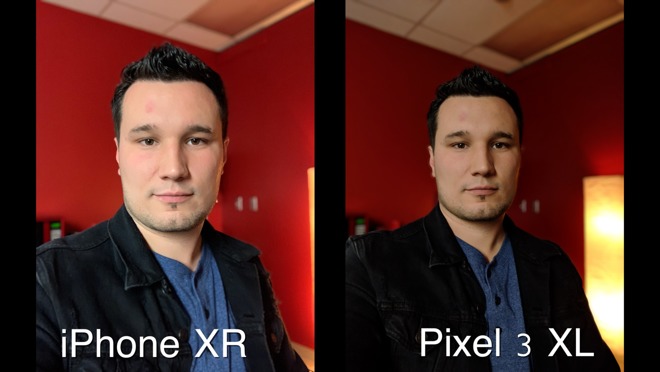
Here, the iPhone's photo just looks really dull, which is honestly what it looked like in real life, but the Pixel 3's photo is more pleasing to the eye.
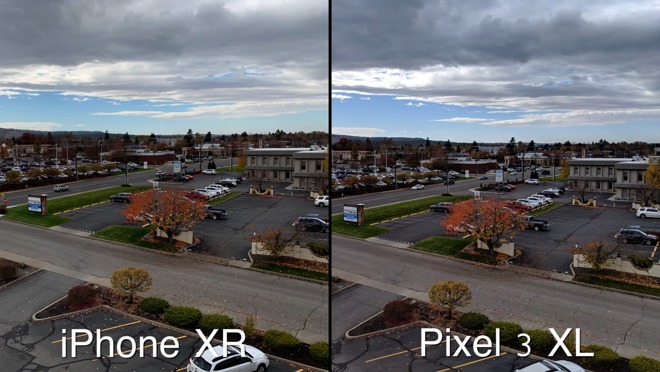
Zooming in, the Pixel could get closer and you can see more detail on the sign as well. Definitely a win for Google's flagship here.
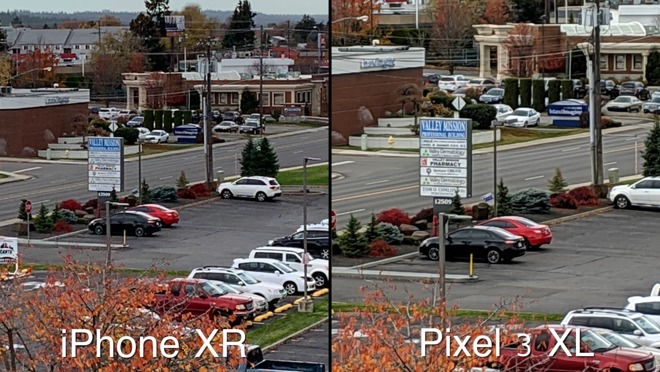
Now testing dynamic range, the Pixel actually blows out the brightest part of the sky, and I myself am darker than I am on the iPhone. The roof itself is way too blue on the pixel, so that's a win for the iPhone.
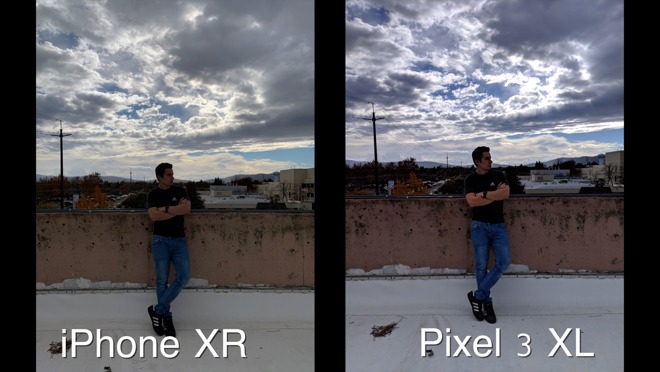
This photo basically illustrates the fact that you can't take portrait photos of objects on the iPhone XR, which is really unfortunate because of how great the blur looks on the Pixel.
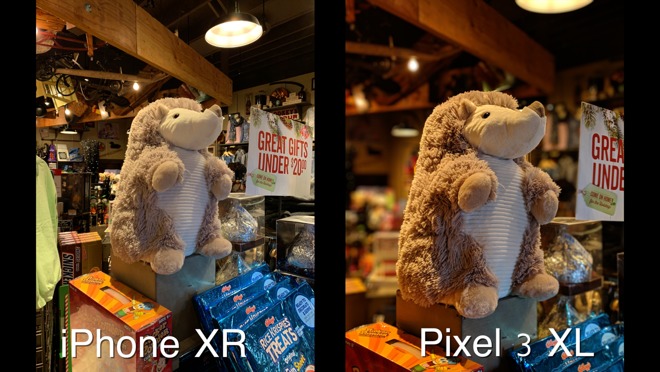
And finally, we see the same thing here. The Pixel's photo just looks so much better with the blur.
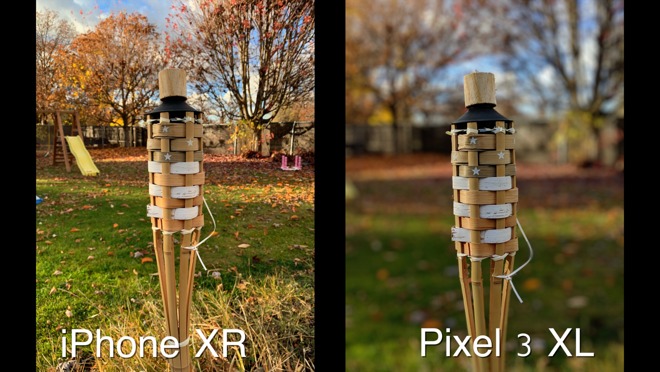
In conclusion, the iPhone did a much better job with white balance accuracy, but it wasn't enough to beat the Pixel 3 XL because that phone crops in 2x for portrait mode photos. The cropping makes the background look less compressed because you have to stand farther away.
You can't zoom in before taking a portrait photo on iPhone XR, though you can crop in in post. Not everyone is willing to do that, however.
The Pixel 3 XL is also able to take portrait photos of objects, making those shots look so much better.
Not only that, but the iPhone's photos lack contrast, making the Pixel's photos look more detailed.
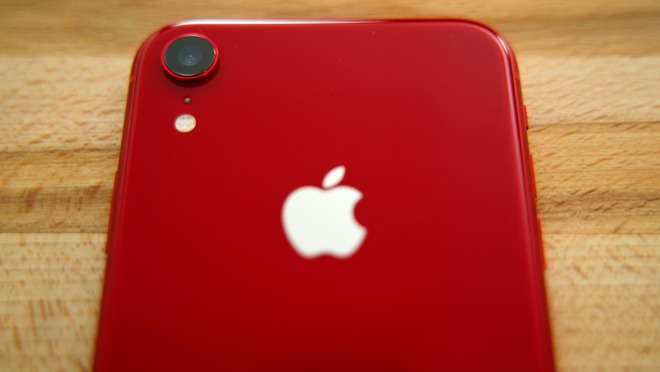
Overall, we've got to give the win to the Pixel 3 XL.
If you want the best in photo quality, the iPhone XS Max performed better than the Pixel 3 XL in our photo and video tests. The extra telephoto lens not only improves blur edging, but adds compression to portrait photos and improves zoom quality.
Carrier deals:

The Blind Test
There's been a lot of talk claiming the Pixel 3's camera is the best in the business, though our earlier test against the iPhone XS Max suggested otherwise. The change in cameras from two to one in the iPhone XR gives another opportunity for Google to claw its imaging credentials back when put against Apple's latest iPhone.In this blind A-B test, there are 15 images shot with each phone. If you want to play along, make a note of which images you prefer from each pair. The devices are identified below the gallery, so be careful if you don't want to spoil the surprise.
For all of the photographs in the blind test, image A was from the iPhone XR, while image B was taken on the Pixel 3 XL.
A Closer Look
While image preferences are largely subjective and can differ between people, in my case I found I like the Google Pixel 3 XL photographs better overall. Here's why.In this first photo, the iPhone just lacks contrast and looks a little bit too warm. The story's exactly the same in this photo. As for this one, the Pixel completely bombed the white balance, making it unrealistically blue.
One interesting thing is that the Pixel automatically crops in 2x while taking portrait photos, which also adds more blur and makes the background look more compressed.
Here, the Pixel is still too blue, and prefer the blur edging more on the iPhone.
In this one, the iPhone looks a lot more natural, but the Pixel did better job at bringing the shadows up.
In this coffee shop, the white balance is better on the iPhone, but the Pixel 3 XL produced sharper detail.
Here, the Pixel 3 messed up the white balance, but in the opposite direction. It's now way too orange.
In this shot where we zoomed in as close as we could, the Pixel got closer and looked more detailed, despite the aggressive noise reduction.
In this one, we actually framed the shot the same by getting closer on the iPhone XR, since you can't zoom in with a portrait photo, and it really showed the difference in compression. Because of this, the Pixel looks better.
In this selfie photo, the iPhone XR looks better because the face and background are brighter and the colors really pop.
Here, the iPhone's photo just looks really dull, which is honestly what it looked like in real life, but the Pixel 3's photo is more pleasing to the eye.
Zooming in, the Pixel could get closer and you can see more detail on the sign as well. Definitely a win for Google's flagship here.
Now testing dynamic range, the Pixel actually blows out the brightest part of the sky, and I myself am darker than I am on the iPhone. The roof itself is way too blue on the pixel, so that's a win for the iPhone.
This photo basically illustrates the fact that you can't take portrait photos of objects on the iPhone XR, which is really unfortunate because of how great the blur looks on the Pixel.
And finally, we see the same thing here. The Pixel's photo just looks so much better with the blur.
In conclusion, the iPhone did a much better job with white balance accuracy, but it wasn't enough to beat the Pixel 3 XL because that phone crops in 2x for portrait mode photos. The cropping makes the background look less compressed because you have to stand farther away.
You can't zoom in before taking a portrait photo on iPhone XR, though you can crop in in post. Not everyone is willing to do that, however.
The Pixel 3 XL is also able to take portrait photos of objects, making those shots look so much better.
Not only that, but the iPhone's photos lack contrast, making the Pixel's photos look more detailed.

Overall, we've got to give the win to the Pixel 3 XL.
If you want the best in photo quality, the iPhone XS Max performed better than the Pixel 3 XL in our photo and video tests. The extra telephoto lens not only improves blur edging, but adds compression to portrait photos and improves zoom quality.
Deals on the iPhone XR and Google Pixel 3 XL
If you haven't already ordered Apple's iPhone XR, wireless carriers are incentivizing the purchase. Want to get your hands on a new device asap? eBay sellers are also shipping units now.Carrier deals:
- AT&T Wireless: Buy one iPhone XR, get a second $700 off when you add a line.
- Verizon Wireless: Buy an iPhone XR and get a save up to $300 with a qualifying trade.
- Sprint: Get the 64GB iPhone XR for $0 per month with eligible trade-in and Sprint Flex lease.
- T-Mobile: Save up to $390 on the iPhone XR with an eligible iPhone trade.


Comments
The good: Background compression looks really nice since it forces you to stand further back.
The bad: You can't take wide portrait photos.
My scoring was 7 to the iPhone and 4 to the Pixel, with a draw on the car park photo (I actually thought they were both pretty poor but the article suggests that's what the conditions were).
I was left wanting to be sure if the girl in the coat swapped coats and, presuming not, was the coat black or blue? The iPhone looks black (though the colour picker reports RGB as 85/85/102 which has a blue cast) whilst the Pixel gets 45/48/107 which is a definite blue. I presume that the Pixel blew the colour balance to an extent that I'd find the photo to be faulty; the subject might or might not like the pale look of her skin tone but, in isolation, I would have seen that as a 'style' (but she's not going to be happy if that's a new black coat!).
Apple demonstrated how good the camera was in the keynote. That wasn't just marketing speak. It's a very good camera. Some of their post-processing needed tweaking, but overall, the hardware tech is right on par with the best phone cameras on the market.
It must be some “artistic” crap, like black & white images vs. color. Color is better... period. Picture clarity is better... period. Realistic colors vs. extra vibrant is subjective. The default should as accurate as possible...
The guy on stage (zoom) is the only place where the iPhone falls short in an obvious way.
Not really - as we’ve seen over the last few weeks, a significant part of image quality for cell phones is the processing which has as much to do with the software team as it does with the hardware team.
Blinded tests like this are great - there are many people who are so blinded by the brand that they are totally unable have an unbiased view. (Not that there’s anyone like that around here!) I liked some iPhone pics better and some Pixel pics better. As others have stated, though there’s a lot of personal preference involved.
Ultimatey, my takeaway from this is that both phones have very respectable cameras. For the vast majority of people, the platform is the determining factor, not the camera. What we see here is that you won’t get a bad camera either way.
The auto-cropping done by the Pixel is very annoying, though. If I want to zoom in, I will. I don’t want the camera framing my shot for me. That alone would be enough to eliminate the Pixel for me.
In general though image quality is rapidly approaching "good enough" status from the major module/lens manufacturers (Chicony, Foxconn, Largen, etc). Most of these pair comparisons can be chaulked up to photographer preference. The expertise of these module companys are reaching a point where you can almost drop in any module and get to a point where most people aren't going to notice major differences most of the time. The fixtures in the factory are pretty much locked in place for calibrating these modules and the sensors all come from same companies. The differences are now mostly in post processing (bokeh, studio, etc) and are "cute/cool" features that's don't really impact general usage. Gone are the days where a crappy phone will produce obviously eye sore images 80% of the time (though there are exceptions).
I spend most of my time now on designing and calibrating camera modules for data collection/AR. 3A (AWB, AE, AF) is taking a back seat to intrinsic, extrinsic camera calibration. You'd be surprised how much a module varies from an individual phone to another. Same phone, same module, same conditions and the optical center or view angle can be way off but still undetectable. Minor differences that can't be seen by a person taking images/videos translate into inches when trying to grab data out of camera pairs.
That's where Apple has a serious advantage right now. They make all the hardware. The know exactly what the tolerances are and how well the cameras' are calibrated for each product. On the Android side, you have Google trying to make post processing software while dozens of companies are making the phones with whatever camera specs they want. It's like trying to herd cats vs cows.
IMHO..
I've worked on cameras at Apple, Nvidia (Tegra 2, Android, HTC, etc), and was head of image quality at a fairly successful camera startup so I'd say I'm fairly unbiased.
https://blog.halide.cam/iphone-xr-a-deep-dive-into-depth-47d36ae69a81
Halide is a very good investment in even more camera control for a mere $5.99.
Pixel's halo feature was touted as photography, but that is no longer the case, compared to current and upcoming competition.
I moved to London in '75 and worked at Morgan & Swan in Camden Town, just when E6 was invented, this was the most anal lab I've ever seen, they specialised in large format duplicates and we used 6121 dupe film, but they were so friggen fussy that potential duplicates were split off into ones for the new 6121 dupe film and ones that used tungsten camera film EHB, however to use this we first had to make highlight and contrast masks, using lith film for the highlight and a pan masking film for the contrast mask. The contrast mask would also have specified filters to further control the colour contrast of the black and white mask. I mention all this because it's burned into my psyche.
I worked in various other pro labs and my last proper job was in London doing various stuff for Adam B but one of our clients was Actis, who would explode with rage if there was the slightest colour imbalance in their E6 processed digital images that sometimes took all night to render. That was in the days when the G3 was king and the G4 just got released, although Actis were using Sun workstations running at a blindingly fast 300mhz. Ha!
I mention all this because I feel qualified to make judgements between two images, because this is what my job was, having to weigh up all the various considerations. In the end I had to produce an image that would focus on what was important. This is not something that most people understand. Sometimes the colour of the footpath in a shot that has nothing to do with the footpath is important. Other times it isn't. Sometime you want to capture the fact that it's late afternoon and an overly warm shot is obviously right. Other times in a very similar situation, some or all of that warmth is better removed, it's a cliché but every shot is different. Often it's instantly recognisable what is right.
Some of the shots offered up are confusing, for example the bear in the shot. One shot has the bear with the background the other shot focuses solely on the bear and blurs everything else. The one on the left with the background is better, but if the bear was the hero and it's impossible to tell from the shot, then the one on the right is better even if it's a bit warm.
Some shots are just taken badly, you have the opportunity to use fill flash on a portrait shot but it's not used. Other times you might be taking portrait shots and would be quite happy to use a simply gobo, which could just be someone with a white shirt nearby, or you might take advantage of a bright wall to help reflect light into the shot. In cases like this we might prefer a camera that is inherently cold or one that captures the warmth.
In other words, many of these tests are pretty well useless. But the camera tests that are done in labs with specialised equipment like DXOmark, are total bullshit. Sure the science is right but the reality is entirely different. To make these comparisons meaningful you have to first interrogate the photographer and ask them what exactly is it that they want to capture?
Do you shoot for the lowest common denominator like the average point and shoot person. There's nothing wrong with that, but they are not really going to give a fuck about minor difference in hue. Or do you shoot for someone who is smart enough to know that they are going to get a very blue shot in shade but know they can point the camera at something else and lock the exposure and colour, and then take the shot.
Having said all that, and without knowing which was which, I ended up with 7 of A and 7 of B.
EDIT: I see there are 15 shots and I recounted my choices 7A and 8B, for the final shot I wrote, 'stupid' but A' stupid because either could be considered better. This is one of those instances where a *small* correction for the late reddish light, is better, but it's a tad too dark. It's also dumb because it is two totally different shots. Really it's still 7 of each with one split decision.
Overall though I think the Pixel is doing a better job, the iPhone is trying to be all things to all people. The Apple's algorithms do not realise that it's better to not pull out too much detail from shadows, like in the shot with the river and pine trees, the iPhone loses the drama but the iPhone shot might be preferable to an amateur. The Pixel is not always successful but it's clearly aimed at photographers it seems to have put more thought into its algorithms. Yet, looking at Apple's non pro customers, I think they'd be happier with the iPhone. Horses for courses.
If you guys want to do a proper test you have to go out with a photographer and ask them what they hope to achieve then take the shot with both cameras and then see how each one did compared to what was wanted.
So in the end, what is the best shot, the one that I know is better or the one that the client likes. I think Apple is better at turning out a shot that the amateur customer will be happier with, but the Pixel is turning out a shot that is better. However the pixel often is comically inept at this like the portrait with the woman with her hands behind her back, whereas overall Apple makes fewer blunders.